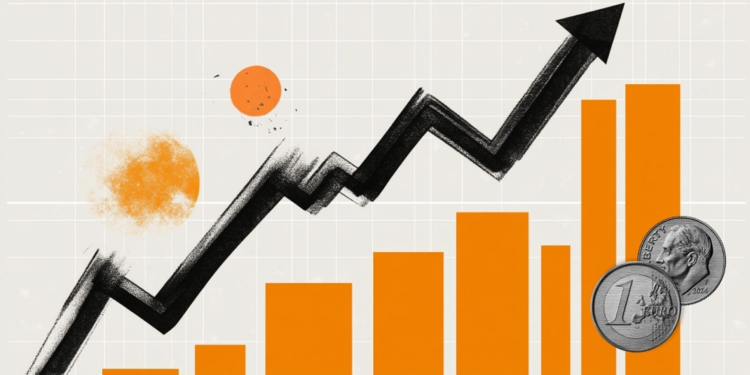- EUR/USD attracts some follow-through buyers on Thursday amid a broadly weaker USD.
- Softer US CPI lifts Fed rate cut bets and weighs on the buck amid the trade uncertainty.
- The fundamental backdrop favors bullish traders as the focus shifts to the US PPI report.
The EUR/USD pair extends its weekly uptrend and climbs to the 1.1530 area or the highest level since April 22 during the Asian session on Thursday. Moreover, the fundamental backdrop favors bullish traders and suggests that the path of least resistance for spot prices is to the upside.
The US Dollar (USD) retests the monthly trough amid firming expectations that the Federal Reserve (Fed) will resume its rate-cutting cycle in September. The bets were reaffirmed by softer US consumer inflation figures released on Wednesday, which, along with persistent trade-related uncertainties, continue to weigh on the buck and act as a tailwind for the EUR/USD pair.
US President Donald Trump told reporters on Wednesday that he will set unilateral tariffs and send letters to trading partners in the next week or two, saying this is the deal you can take it or leave it. Trump’s comments add a layer of uncertainty and overshadow the optimism over the US-China agreement on a plan to implement the Geneva Consensus and ease trade tensions.
The shared currency, on the other hand, draws support from the European Central Bank’s (ECB) hawkish signal that the end of the rate-cutting cycle is nearing. This is seen as another factor that contributes to the bid tone surrounding the EUR/USD pair and validates the near-term positive outlook in the absence of any relevant market-moving economic releases from the Eurozone.
Meanwhile, the US economic docket features the Producer Price Index (PPI) and the usual Weekly Initial Jobless Claims. The data might influence the USD price dynamics and the EUR/USD pair. That said, any positive USD reaction to the data is likely to be short-lived. Moreover, the aforementioned supportive factors back the case for a further appreciating move for the pair.
Euro FAQs
The Euro is the currency for the 19 European Union countries that belong to the Eurozone. It is the second most heavily traded currency in the world behind the US Dollar. In 2022, it accounted for 31% of all foreign exchange transactions, with an average daily turnover of over $2.2 trillion a day.
EUR/USD is the most heavily traded currency pair in the world, accounting for an estimated 30% off all transactions, followed by EUR/JPY (4%), EUR/GBP (3%) and EUR/AUD (2%).
The European Central Bank (ECB) in Frankfurt, Germany, is the reserve bank for the Eurozone. The ECB sets interest rates and manages monetary policy.
The ECB’s primary mandate is to maintain price stability, which means either controlling inflation or stimulating growth. Its primary tool is the raising or lowering of interest rates. Relatively high interest rates – or the expectation of higher rates – will usually benefit the Euro and vice versa.
The ECB Governing Council makes monetary policy decisions at meetings held eight times a year. Decisions are made by heads of the Eurozone national banks and six permanent members, including the President of the ECB, Christine Lagarde.
Eurozone inflation data, measured by the Harmonized Index of Consumer Prices (HICP), is an important econometric for the Euro. If inflation rises more than expected, especially if above the ECB’s 2% target, it obliges the ECB to raise interest rates to bring it back under control.
Relatively high interest rates compared to its counterparts will usually benefit the Euro, as it makes the region more attractive as a place for global investors to park their money.
Data releases gauge the health of the economy and can impact on the Euro. Indicators such as GDP, Manufacturing and Services PMIs, employment, and consumer sentiment surveys can all influence the direction of the single currency.
A strong economy is good for the Euro. Not only does it attract more foreign investment but it may encourage the ECB to put up interest rates, which will directly strengthen the Euro. Otherwise, if economic data is weak, the Euro is likely to fall.
Economic data for the four largest economies in the euro area (Germany, France, Italy and Spain) are especially significant, as they account for 75% of the Eurozone’s economy.
Another significant data release for the Euro is the Trade Balance. This indicator measures the difference between what a country earns from its exports and what it spends on imports over a given period.
If a country produces highly sought after exports then its currency will gain in value purely from the extra demand created from foreign buyers seeking to purchase these goods. Therefore, a positive net Trade Balance strengthens a currency and vice versa for a negative balance.

